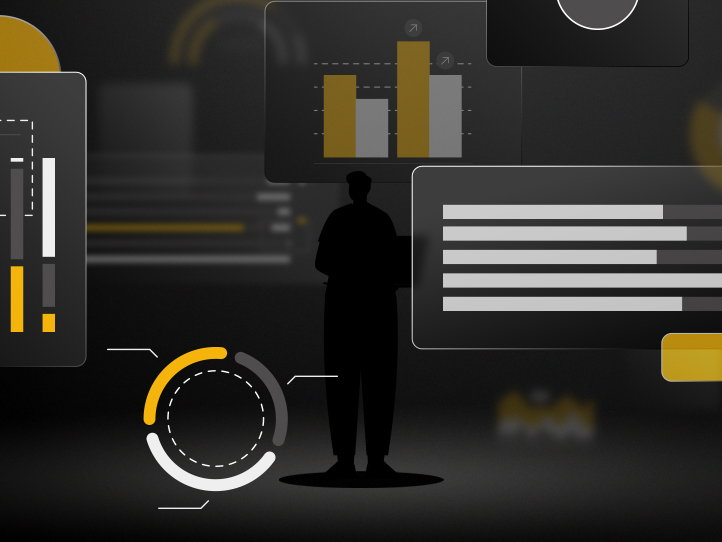7 steps for the modern business to become social media savvy

Your business needs social media
With an estimated 3.6 billion people using social media worldwide, by now you’re probably aware that maintaining your brand’s presence on social media is critical if you want to compete in this ever-progressing digital landscape.
A strong social media presence not only offers new opportunities for leads and sales, but also strengthens customer loyalty, enhances your networking, and opens the door for more partnerships and customer feedback – all the while driving traffic to your website and raising awareness of your brand.
However, the steps needed to assert or improve your presence on socials may feel unclear. Many businesses assume that social media management is easy to take on at first, due to the deceptively simple user experience on most platforms.
But in actual fact, it’s a very different, more intricate experience than managing a personal account, and if handled incorrectly, it can even have a detrimental impact on your brand.
So here are seven steps that any modern business can take to ensure their brand is making the most out of social media in the digital age.
Keep an eye on the competition
By monitoring the performance data of your competitors, you can gain insights into what works and what doesn’t, for smarter decision-making and a better strategy. Researching and analysing competitor behaviour means you can stay one step ahead, and be inspired by new ideas while avoiding their mistakes – and you can outline any threats to your business and identify gaps in your strategy.
After all, why reinvent when you can circumvent?
There are a number of social competitor analysis tools you can use to do this, including FanPage Karma, Awario, Unmetric, and Iconosquare. You then need to decide which audience, engagement, and content metrics are useful to you.
Some of those metrics might be percentage of engagement per media, followers gained, follower growth, comments, likes, the most used hashtags, average posts per day and so on – it’s what’s important to your business.
Get to know your audience
If you don’t know who your audience is, how can you give them what they want? It’s important to learn your audience’s needs and motivations, as well as their behaviours. What social media platforms do they use? When do they use them? And what are they looking for?
With the answers, you can tailor your content to ensure you are serving the right message, at the right time, in the right place.
Different audience demographics behave differently online. So knowing who’s on what platform aids your researching, advertising and marketing decisions, and ensures you’re providing the most relevant content to achieve your business goals.
Change the channel
Once you have an understanding of your audience’s needs and preferences, as well as those of your competitors, it’s time to select which social media channels are most suited to your audience and products/services.
Each social network provides unique delivery opportunities for you to entice your audience. For example, Instagram is a highly visual, creative platform. It can be a great place to showcase your products and services in a more imaginative or artistic manner.
It’s also considered to be less formal than other platforms – perfect for showing off your brand personality and company culture.
Twitter, on the other hand, is most often used for consumer care. It’s an effective platform for engaging with your audience, ripe for quick feedback and offering speedy responses. Whereas, LinkedIn is arguably the most useful platform for B2B marketing or targeting a professional demographic.
Consider your channel selection carefully to ensure your messaging is broadcast in the most effective way, reaching the right prospects and generating leads.
It’s common for marketers to spread themselves too thin, so bear in mind your staff resources as part of the selection process. If you have only one team member, attempting to establish a brand presence across six different social media channels may be unrealistic.
Consistency is key
Your presence on social media is an extension of your brand, and should, therefore, align with your other forms of brand messaging. Maintaining a consistent voice helps your brand strengthening its trust and reliability, creating a distinct personality among your competitors.
To help you adhere to this, developing brand guidelines can be a helpful tool when maintaining consistency in your Tone of Voice. Consider why your brand exists, what its values are, and how you want customers to feel when interacting with your brand.
The overuse of internet terms or trendy slang can actually damage your reputation, making you seen out of touch or ‘cheap’, and subsequently hurting engagement.
In your guidelines, you may consider outlining limitations for hashtag use to avoid being penalised by certain platforms and creating an emoji palette to regulate your messaging. Without such consistency, there’s a lot of room for errors in communication between your brand and your customers.
Engage
Arguably the most important social media best practise is your willingness to engage with your audience.
Posting regularly and capitalising on customer interest is a necessity in today’s social climate if you want to keep your followers invested in your brand – and it’s crucial for the growth of your business.
No one wants to receive an automated message or talk to a robot. So, interacting with customers and responding to them quickly is essential if you want to humanise your brand, nurture relationships and increase customer loyalty.
Ensure your account looks active with real-time updates, through Instagram stories or live tweeting for example. Avoid cheesy iStock imagery, and instead opt for authentic, original content that reinforces your brand personality and culture.
In order to remain active and engage, you’ll need to monitor your channels as often as possible, at least daily, and post regularly. There are plenty of social media management tools that can help you do just this. Pre-scheduling social posts is a huge time-saver, rescuing you from posting manually at all hours of the day.
Stop, look, listen
It’s also good practise to keep your ear to the ground, through social listening. Social listening is the process of monitoring social media channels for mentions of your brand, product, competitors, and more, providing the opportunity to track, analyse and respond to conversations.
Understanding how people feel about your brand helps you keep your marketing and product/service development efforts on track.
Without social listening, you might be missing out on a big piece of insight about your brand or industry that people are talking about.
It also allows you to outline pain points, and better your crisis management tactics by responding right away to negative posts (should there be any!). It can also help you identify social influencers, providing opportunities for partnerships and advertising.
Measure
The final step in any digital marketing campaign is measurement. As with your initial data-gathering exercises, measuring the effectiveness of your social media marketing activity will help you to optimise your approach and guarantee ongoing success. And luckily, there are a range of analytics tools you can use to gain these insights.
Get in touch
Social media is a vital tool that all businesses should take advantage of in order to maintain optimum brand loyalty, reach, and engagement.
If you would like to fine-tune your business’s social media activity, boost your reach and get noticed, get in touch with us today at marketing@proctors.co.uk.








